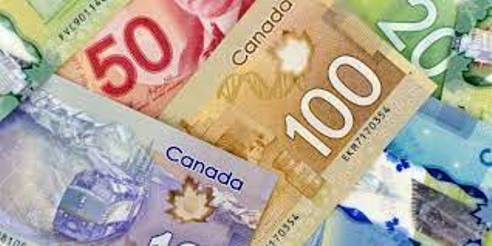LAGOS DECEMBER 19TH (NEWSRANGERS)-The rate of inflation in Canada unexpectedly remained stuck at 3.1% last month, giving the central bank another reason to keep its policy rate at the highest level in two decades.
The consumer price index rose by 3.1% in November from a year ago, matching the increase a month earlier, Statistics Canada reported Tuesday in Ottawa. That’s faster than the median estimate of 2.9% in a Bloomberg survey of economists.
The Canadian dollar jumped as high as C$1.3336 per US dollar, the highest intraday level since Aug. 4, while bonds sold off. The yield on the benchmark two-year note rose back above 4%.
Two key yearly inflation measures that are tracked closely by the Bank of Canada and filter out components with more volatile price fluctuations — the so-called trim and median core rates — were unchanged, averaging 3.45% year-over-year. That was faster than the 3.35% pace expected by economists.
On a monthly basis, the consumer price index rose 0.1%, versus expectations for a decrease of 0.1%.
Another key measure, a three-month moving average of underlying price pressures, fell to an annualized pace of 2.45% from 2.86% a month earlier, according to Bloomberg calculations. It’s an important metric because Bank of Canada Governor Tiff Macklem has said policymakers are tracking it closely to understand inflation trends.
Mortgage interest costs remain the largest upside contributor to the consumer price index, with the inflation rate excluding those costs sitting at 2.2% in November. Excluding shelter costs entirely, that figure is 1.9%.
In other words, the headline inflation number is being driven by the central bank’s past rate increases, as well as a surge in immigration that is helping to drive up rental costs.
“You could argue — and I would agree with this — that you should treat it like an oil shock,” economist Craig Alexander said on BNN Bloomberg Television. “And the Bank of Canada often looks past an oil shock in terms of what’s happening to underlying inflation.”
Read More: Macklem Sees Bank of Canada Cutting Rates Sometime in 2024
Still, Tuesday’s numbers represent a setback for policymakers after they held the central bank’s overnight rate steady at 5% for the third straight meeting last month. Yet they’re unlikely to faze Macklem and his officials, who are counting on a weaker economy to help ease the pace of price gains in the coming months.
The disappointing inflation data, however, will give them no reason to talk about cuts or bring rates down any time soon. In a recent interview with BNN Bloomberg Television, Macklem said easing is expected sometime in 2024, but he needs to see several months of sustained downward momentum in core inflation first.
This is the first of two inflation reports before the Bank of Canada’s next rate decision on Jan. 24, when the majority of economists in a Bloomberg survey expect the bank to keep borrowing costs unchanged again. With the Canadian economy already showing signs of stagnation and the rate of inflation expected to slow further, many economists say rate hikes are done for this cycle.
The US Federal Reserve this month also kept the interest rate unchanged for a third consecutive meeting, and gave its clearest signal yet that its hiking campaign is finished, forecasting a series of cuts next year. Macklem, however, has reiterated that it’s still too early to consider easing, a stance that’s also taken by officials at the Bank of England and the European Central Bank.
In a speech last week, Macklem said he expects inflation in Canada to be getting closer to the 2% target by the end of next year as the effect of past interest rate increases continues to restrain spending and limit growth and employment. But he said policymakers will mull rate cuts only when they’re assured that there’s a clear path back to price stability, and warned of “bumps” along the way.
In November, services inflation held steady at 4.6%. Goods inflation slightly rose by 1.4%.
Major contributors to the CPI were the mortgage interest cost, with a 29.8% change from the same month last year, rent and food.
Meanwhile, gasoline, telephone services and natural gas put downward pressures on the inflation rate.
Regionally, prices increased at a slower pace from a year ago compared with October in 6 of 10 Canadian provinces. Quebec had the highest inflation rate at 3.6%.
BloomBerg
For advert placement, events coverage, media placement, public relation consultancy and further inquiries please WhatsApp 2348023773039 or email: labakevwe@yahoo.com












